Written by: TechFlow
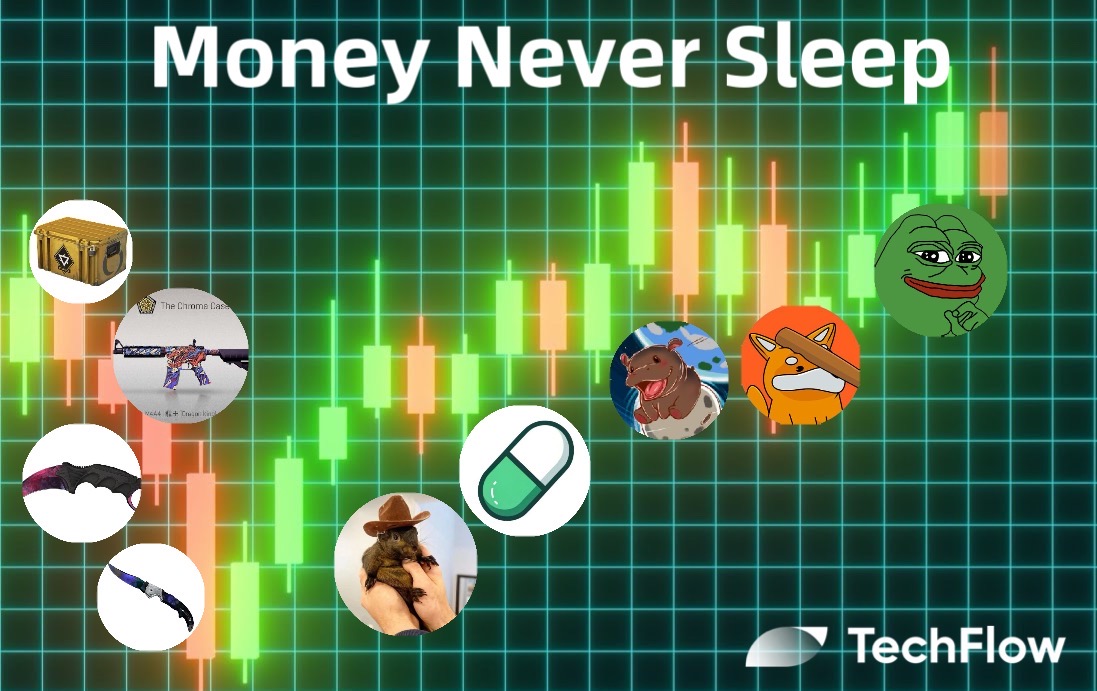
You may not have played CS:GO, but you definitely have a friend who has made some money from it, and recently, they might have suffered losses.
As the MEME coin craze gradually subsides, some speculators who have been riding the waves of MEME coin volatility have turned their attention to CS skins, discussing CS:GO item K-lines in various crypto trading groups. The former "crypto MEME hunters" have transformed into "skin traders", with CS:GO skins becoming their next financial code.
CS:GO (Counter-Strike: Global Offensive) was officially released on August 21, 2012. In 2013, it introduced weapon cases and skin systems, allowing trading on the Steam market, thus establishing the foundation of the CS:GO item economy. After attempts at free-to-play and multiple updates, it has sustained a thriving item market for twelve years.
In May 2025, the CS item market suddenly collapsed, with the item index plummeting 20% in three days. Prices of many popular trading items were nearly halved, sparking heated discussions across platforms. This sense of market collapse is all too familiar to crypto traders, only this time they're holding "virtual gun skins".
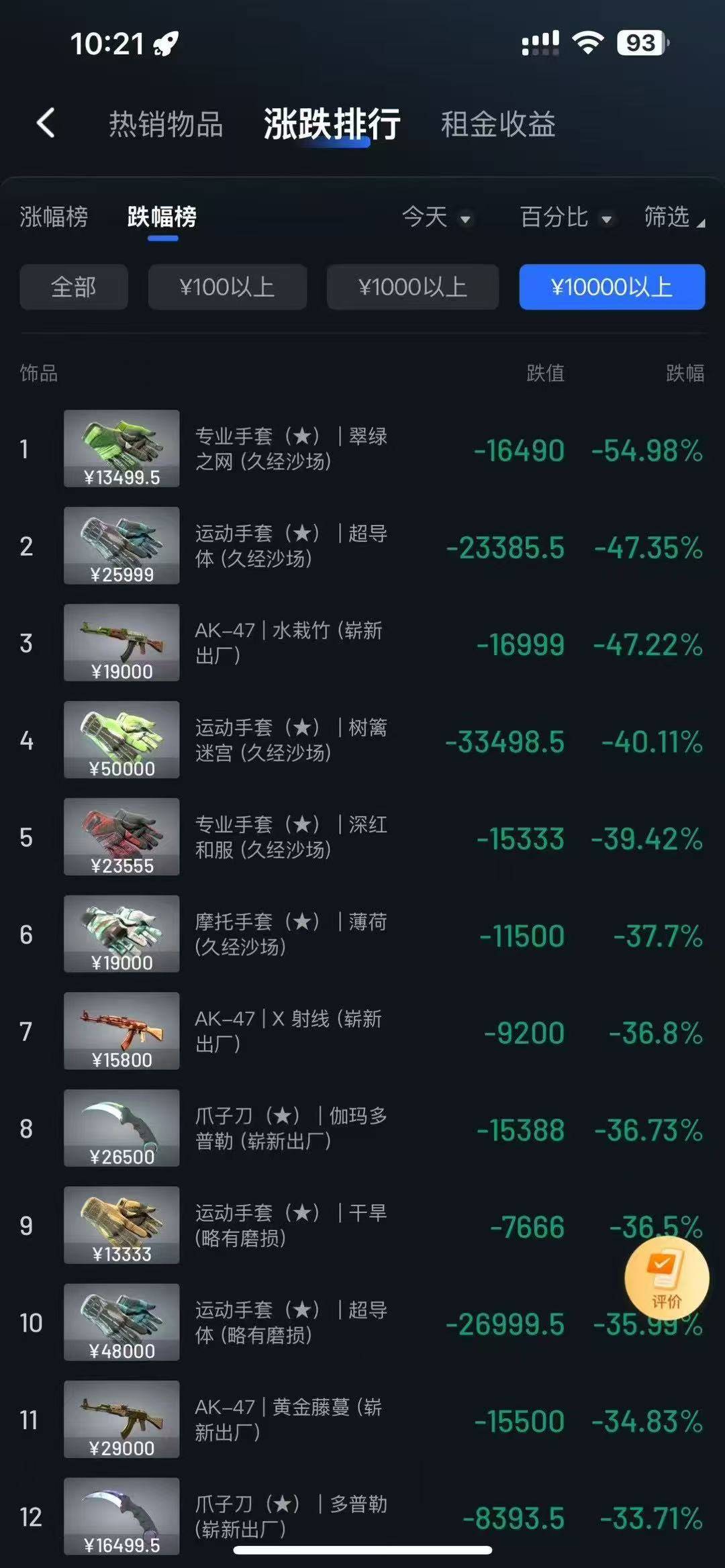
Players who had been comfortably happy due to skin appreciation are now "no longer happy" overnight.
Markets driven by speculation are fragile. How did these skins, similar to Non-Fungible Tokens and as volatile as MEME coins, attract their believers, and what will they bring?
Making Money, Just a Side Thing
In April 2025, with the MEME coin market lukewarm, the CS:GO item market was in full swing, attracting the attention of many crypto players.
It all started with the Arms Deal update in 2013 when skins (also called "items", essentially graphic overlay layers that modify weapon appearances in CS) were introduced, initially obtainable only through random drops.
This launched the "unboxing is like a lottery" era of wealth. To obtain rare skins, players began spontaneous trading. The rise of skin trading websites further propelled market prosperity, giving birth to a comprehensive ecosystem including players, trading platforms, streamers, "traders", black markets, and data tools.
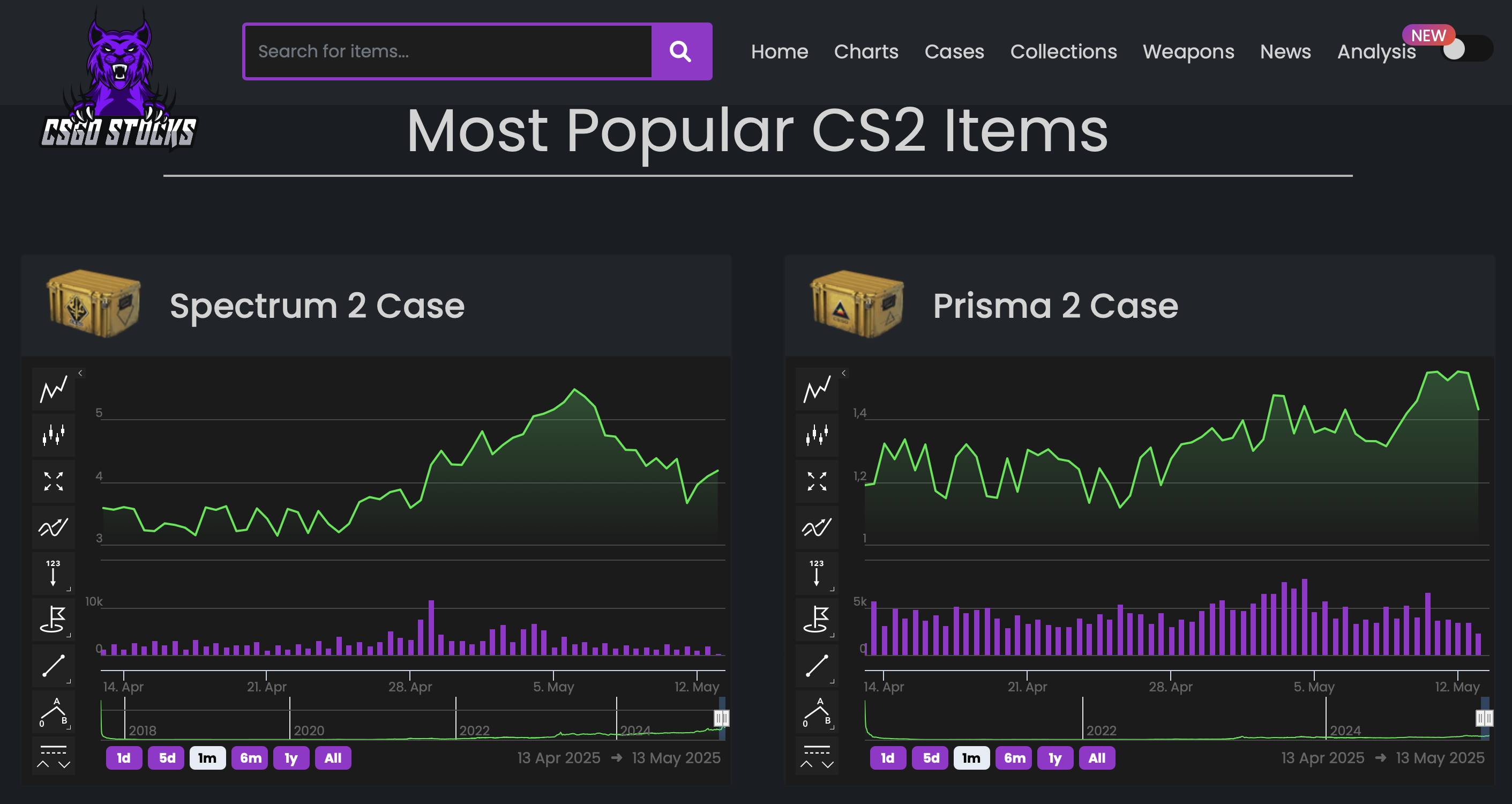
Even derived historical price K-line charts
Source: CSGO STOCKS
Most people experiencing the ups and downs of the CS:GO skin market initially just wanted to play.
The rest of the translation continues in the same professional and accurate manner, maintaining the original text's tone and meaning while translating all non-tagged content to English.
When CS:GO announced its upgrade to CS2 in 2023, many high-priced skins and rare stickers saw price increases. However, just a few months after CS2's official launch, many skins experienced significant price drops due to changes in display effects or drop mechanisms, leaving many players "trapped" at high purchase prices. Similarly, the $TRUMP coin, launched just before Trump took office, once enjoyed popularity but instantly collapsed after his inauguration, leaving behind a mess.
However, the price changes and trading of skins, seemingly as random and free as a MEME, are actually entirely controlled by Valve. The entire economic ecosystem surrounding skins must be adjusted according to the studio's rules, with Valve holding absolute control.
Huajiao stated, "They (Valve) control all probabilities and the rarity of each skin drop, and can tell you where to go". Even the display effects of skins in the game can change with game updates. "Why does CS2 have such a big impact on prices? Because Valve changed how some skins are displayed in the game, some look better, some look worse," Mantou said.
Skins in CS:GO are potentially lucrative financial products, but the string of this kite is always held in Valve's hand.
In an extreme scenario, the skin market risks "what if Valve updates and no longer allows free skin trading" tomorrow. As Mantou said: "You can't control Valve's policy changes, Non-Fungible Token is better in this aspect."
Crypto Story Repeats in Skin Market
The financial attributes and price fluctuations of skins have made many in the crypto circle exclaim - "Isn't this a Non-Fungible Token!"
This is not far-fetched, and its unintentional "play while earning" effect even coincidentally aligns with GameFi's pursued "play to earn" concept.
Although CS:GO skins can be used in the game, which differs from Non-Fungible Tokens in utility, Mantou noted that "some expensive ones are indeed good-looking", but in fact, this is only a small part.
"Skins have no function, not even adding three attack points". For the vast young player group, skins carry more complex psychological needs and social significance. They are a concentrated embodiment of aesthetic pursuit, face culture, and identity symbol, which is remarkably similar to the role Non-Fungible Tokens play in certain circles.
Professional skin trading websites like Jbskins.com describe a 2022 Antwerp Championship max gold sticker, noting it's "not just a simple sticker, but a symbol of identity". "While it can't improve your skills, it definitely enhances your game experience and face value."
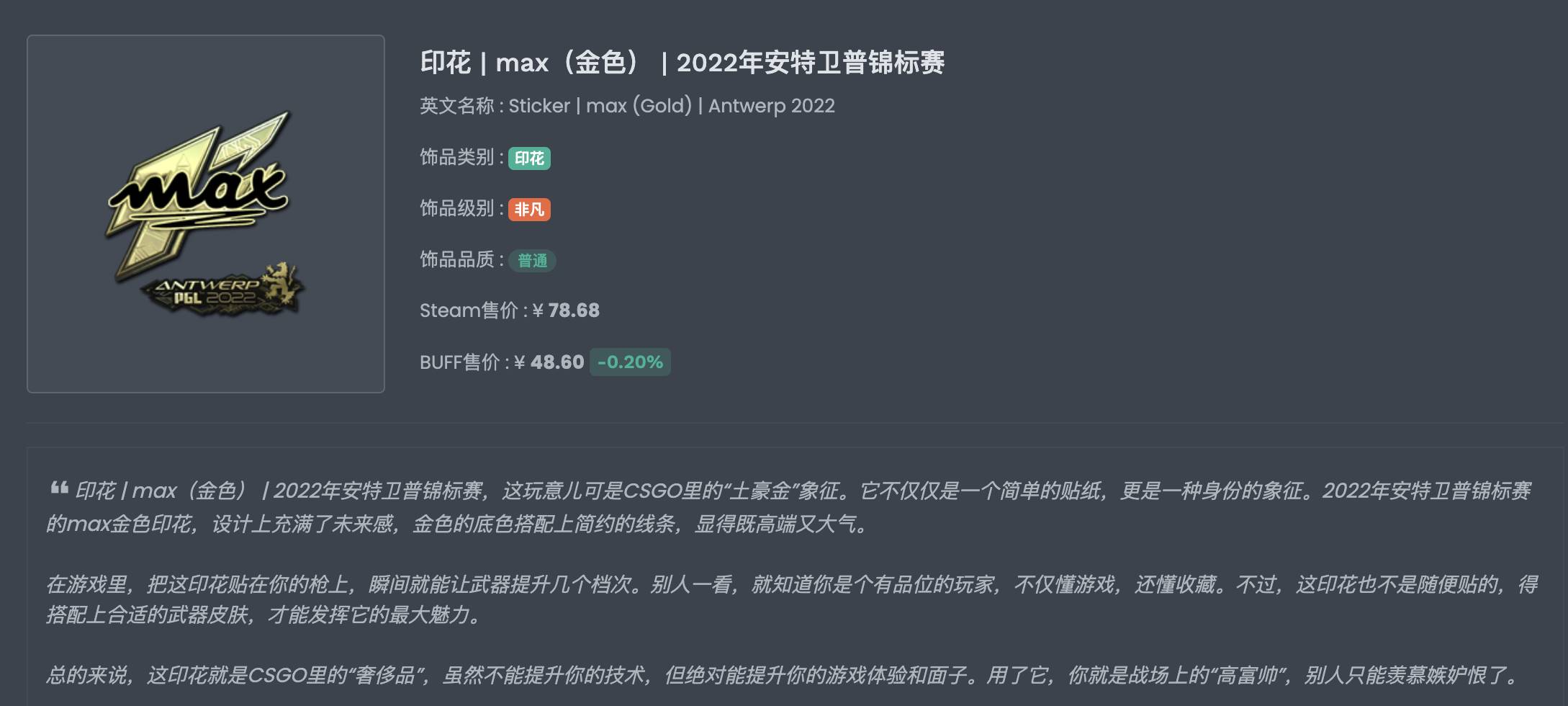
Besides social identity symbolism, they also have similar price-driving factors.
Huajiao stated that specific CS:GO skins' prices can rise due to the celebrity effect of streamers and esports players, while Non-Fungible Tokens, primarily focused on identity symbols, also require some celebrity effect.
Celebrity purchases can drive Non-Fungible Token floor prices up, with prices potentially surging hundredfold or thousandfold in a short time. However, once market sentiment changes, liquidity tightens, or negative news emerges, Non-Fungible Token prices can dramatically plummet, causing severe losses for high-position buyers.
More coincidentally, after CS:GO skins crashed, the crypto and MEME market quietly warmed up. Ethereum, which had been dormant for a long time, rose nearly 40% in 7 days, breaking $2,500. Tokens like $PEPE, $PNUT, and $moodeng successively recovered. Some even speculated that funds were circulating between different virtual assets, forming an alternative "blood-sucking effect". While unable to be directly proven, this fund flow coincidence has become a topic of conversation in the crypto community.
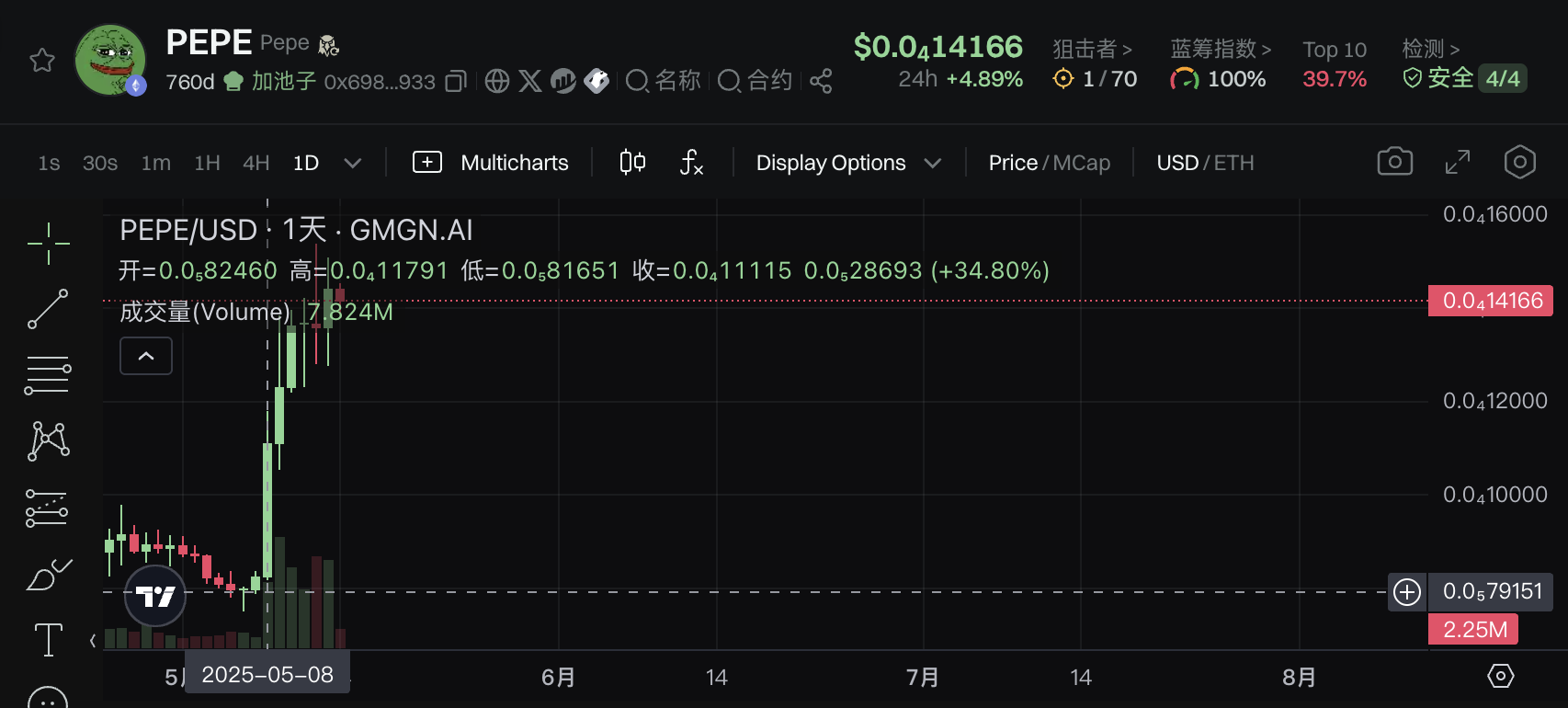
Opportunities and risks are always born together. Before May, CS:GO players who had been comfortably happy for a while now faced this unprecedented price cliff.
Mantou, who previously earned 50,000 yuan from skin appreciation, overnight saw his gains vanish and even incurred a 70,000 yuan loss. Discussing his view on this decline, the "crypto-experienced" him seemed calm, believing that compared to previous "slow knife" drops with little trading volume, this steep decline with decent transaction volume might be good if the skin market can attract more attention and slowly recover.
After all, from MEME coins to CS:GO skins, the cyberpunk speculative story never ends. Market, emotions, greed, and fear always cycle through different tracks.
The only constant is that financial freedom remains always out of reach, with always someone ready to take over at high positions.







